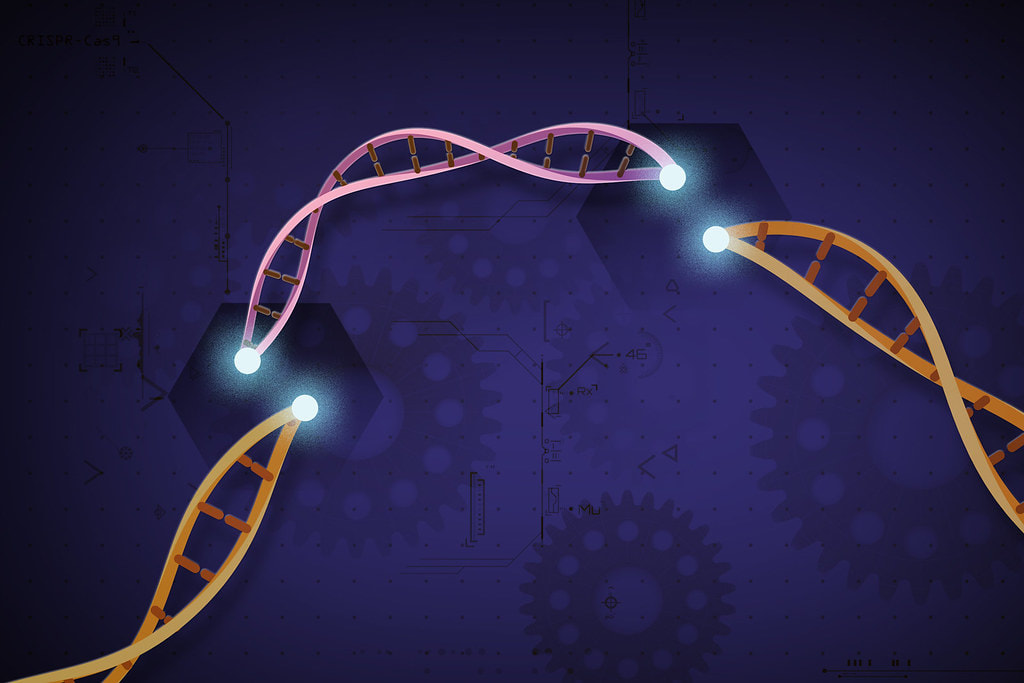|
By Anna Christou
Antibiotics have impacted medicine and public health by providing a tool to control and kill bacteria. However, this powerful technology is accompanied by a wealth of problems, including resistance: when an antibiotic becomes unable to kill bacteria. Therefore, researchers have been motivated to experiment with new approaches to treating bacterial infections, including using gene-editing therapy. Resistance has made treating bacterial infections using antibiotics a widespread challenge. According to the Centers for Disease Control and Prevention, at least 2 million people are infected with antibiotic-resistant bacteria in the United States each year, and at least 23,000 people die from these infections. This is particularly an issue in hospitals, as according to the National Institutes of Allergy and Infectious Diseases, about 90,000 of hospital patients who develop an infection die each year as a result. This large problem all comes down to a classic case of natural selection and survival of the fittest. Specifically, in a population of bacteria, there is natural variation in traits, including genes that relate to survival. Because of this variety, some bacteria have the ability to withstand being killed by antibiotics. As a result, these lucky bacteria with the genes to withstand antibiotic treatment will persist and survive longer. Therefore, in the population, the bacteria with the resistance gene will have more opportunities to reproduce, further propagating the presence of the resistance gene. Misusing antibiotics, such as by not finishing a full course of shots or pills, can exacerbate this problem; rather than kill the entire population of bacteria, the antibiotic only kills some of them and leaves the resistant ones to multiply. Over-prescribing antibiotics for viral infections which are not treatable with antibiotics also fosters resistance. If a population of bacteria are targeted by a large amount of antibiotics, the resistant bacteria will be more likely to stand out and survive, propagating the resistance gene. Because overusing antibiotics further contributes to resistance, researchers have recently been working to attack bacteria using novel mechanisms. For example, there has been some research on the use of viruses, which selectively target bacteria, but not human cells—a technique called bacteriophage therapy. Furthermore, researchers at the New York University School of Medicine have recently discovered that they can use the gene-editing technique CRISPR/Cas9 to kill bacteria, specifically Staphylococcus aureus bacteria. The gene-editing technique CRISPR/Cas9 targets pathogenicity islands, which are sections of bacterial DNA that make the bacteria more harmful. Specifically, pathogenicity islands contain toxic proteins that when recognized by the immune system, release inflammatory molecules. A large production of these inflammatory molecules cause symptoms of infection, including organ failure and shock. Therefore, these researchers used CRISPR/Cas9 to modify these pathogenicity islands by either removing or blocking them. CRISPR/Cas9 is a system, naturally present in the bacterial immune system, that has been developed as a technique to target genes and to consequently delete or replace them. The system consists of two components: a Cas9 enzyme that acts as “molecular scissors” to cut the targeted gene, and a guide genetic sequence that directs the Cas9 enzyme to the gene to be cut. The scientists injected CRISPR/Cas9 into mice and tested two different, but related, versions of this system. In the first version, after being directed to the target pathogenicity island by the guide sequence, the Cas9 cuts the pathogenicity island, which kills the bacteria. In the other version, the Cas9 enzyme reaches the DNA but, rather than cutting it, just latches onto the gene. Holding onto the island blocks it, making the bacteria less effective at causing infection. The researchers then tested these results by injecting the gene-editing system into mice. Both versions of the CRISPR/Cas9 system—cutting and blocking the islands—were effective in controlling the development of infection in mice. Specifically, animals that received either of these versions of the treatment were prevented from developing an abscess, which is swelling that results from a bacterial infection. Also, S. aureus bacteria were injected into the body cavities of mice that received the first version of the gene-editing system, which killed the bacteria, in order to study how well mice could withstand infection. The mice that received the therapy that cut bacterial DNA and killed the bacteria survived the injection of these bacteria. However, the researchers found that some of the bacteria could still be resistant to this therapy, suggesting that resistance may still be a challenge that needs to be overcome. Through the ability to target different pathogenicity islands, gene-editing offers more possible solutions that likely will target the bacteria in more effectively, rather than just using one antibiotic. Therefore, CRISPR/Cas9 provides another way of treating bacterial infections without the use of antibiotics. By attacking bacteria from within through pathogenicity islands, gene-editing offers the potential for more varied targets, which might reduce the likelihood of resistance.
0 Comments
Leave a Reply. |
Categories
All
Archives
April 2024
|

